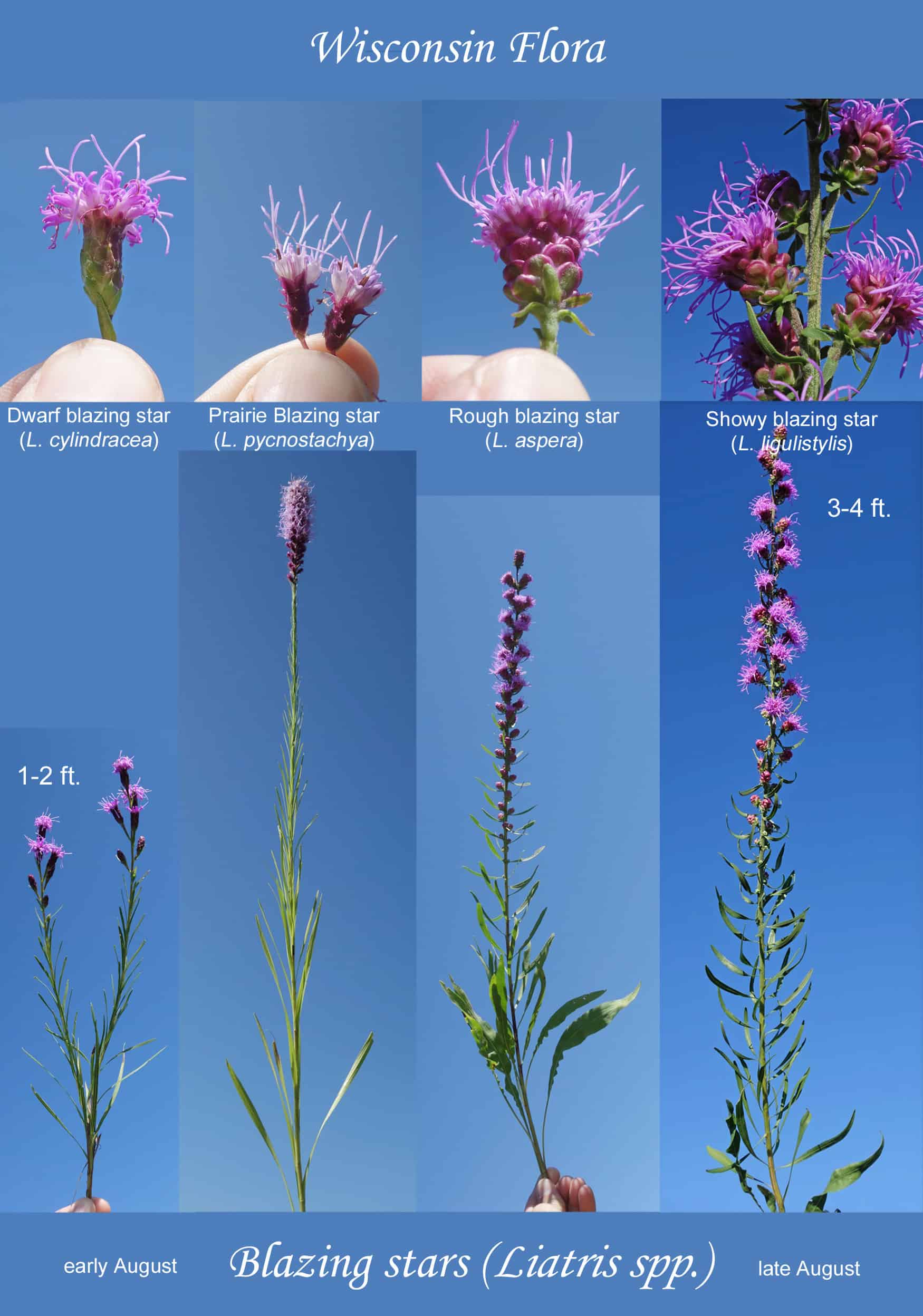Here are the four Liatris species most likely to be seen on our beloved Wisconsin prairie remnants. All are members of the sunflower family (Asteraceae). All have tiny pink to magenta flowers bundled into ‘floral cups’, with outer bracts on those cups that form layers like shingles, and positively identify the species. Good eyesight is helpful. All species bloom from the bottom upwards. They are discussed here in their order of seasonal blooming.

Dwarf blazing star (Liatris cylindracea)
Late July or early August. Shorter than knee high. Flower bundles loosely alternating up the stems, each bundle waving on a brief stalk more or less as long as the flower cup itself. Floral bracts are rounded like fingernails, with sharp points on each, adhering to the cup and never lifting away. Dry limey prairie.
Prairie blazing star (Liatris pycnostachya) aka ‘gayfeather’
Late July or early August. Knee to waist high. Flowers bundles spaced tightly on the stalk, the whole appearing like a rosy, feathery cattail. Floral bracts triangular, pointed, peeling away. Wet prairie, sometimes mixed into wetlands denoting where the ground is solid enough to stand on.
Rough blazing star (Liatris aspera)
Mid to late August, early September. Knee to waist high. No stalks connecting flower bundles to the main stem (sessile). Floral bracts distinctly rounded and cupping, creating a 3-D texture. Dry mesic to dry prairie, often in sand.
Showy blazing star (Liatris ligulistylis)
In my experience the least common of these. Mid to late August. Waist high. Very similar to L. aspera, except lower flower bundles are born on stalks about as long as the flowers. Mesic to dry prairie. Champion butterfly attractor.
